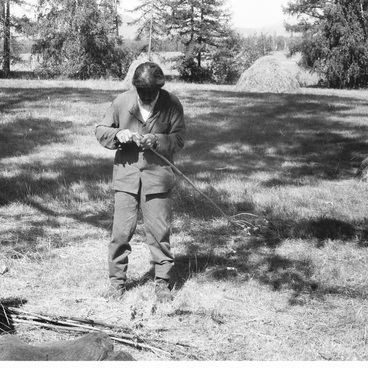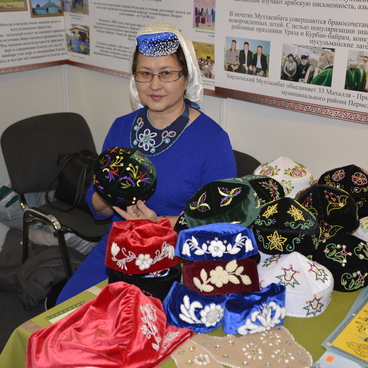Bear rituals are a series of ceremonies held during and after bear hunting, including the mourning period.
The rituals start the moment a bear is killed. The hunters then perform field dressing and start speaking a secret language. After the skinning, the people cleanse themselves with snow. Then they arrange the bear in a certain “sacrificial pose” on a special hoop called a cradle, and head home. On their way, they introduce the bear to holy sites, where they make food offerings to patron spirits.
Once they reach the settlement, the hunters start loudly announcing their arrival to residents. They are traditionally greeted with a bowl of smoldering chaga mushroom. The smoke is used to purify the hunters and the bear. Then everyone present starts to sprinkle each other with water or snow.
The bear’s head is then placed around the consecrated corner of one of the settlement houses for a fortune-telling ceremony. The beast is asked about the forest spirit that came in the guise of a bear, the willingness to become a house patron spirit, and the permission to hold the bear rituals. If the bear gives its consent, then the residents set the time period of the rituals and invite their relatives from other settlements.
Every day the ceremony begins around noon and lasts until morning with the guests singing, dancing, and acting out scenes. One of the participants sings a song about the awakening of the bear and removes the kerchief covering its head. A bowl of smoldering chaga mushroom and some hot tea are placed in front of the bear. The festivities end for the day when everyone goes to sleep.
The bear rituals conclude with the coming of animals and birds that take the bear’s soul away with them. After the ceremony, men gather separately, perform a secret song, and wonder about what the next hunt will bring. The rituals are also followed by a mourning period from four to five days which forbids any songs, merrymaking, or swearing. It also implies that household things and food continue to be named in the “bear language”.
The rituals start the moment a bear is killed. The hunters then perform field dressing and start speaking a secret language. After the skinning, the people cleanse themselves with snow. Then they arrange the bear in a certain “sacrificial pose” on a special hoop called a cradle, and head home. On their way, they introduce the bear to holy sites, where they make food offerings to patron spirits.
Once they reach the settlement, the hunters start loudly announcing their arrival to residents. They are traditionally greeted with a bowl of smoldering chaga mushroom. The smoke is used to purify the hunters and the bear. Then everyone present starts to sprinkle each other with water or snow.
The bear’s head is then placed around the consecrated corner of one of the settlement houses for a fortune-telling ceremony. The beast is asked about the forest spirit that came in the guise of a bear, the willingness to become a house patron spirit, and the permission to hold the bear rituals. If the bear gives its consent, then the residents set the time period of the rituals and invite their relatives from other settlements.
Every day the ceremony begins around noon and lasts until morning with the guests singing, dancing, and acting out scenes. One of the participants sings a song about the awakening of the bear and removes the kerchief covering its head. A bowl of smoldering chaga mushroom and some hot tea are placed in front of the bear. The festivities end for the day when everyone goes to sleep.
The bear rituals conclude with the coming of animals and birds that take the bear’s soul away with them. After the ceremony, men gather separately, perform a secret song, and wonder about what the next hunt will bring. The rituals are also followed by a mourning period from four to five days which forbids any songs, merrymaking, or swearing. It also implies that household things and food continue to be named in the “bear language”.



